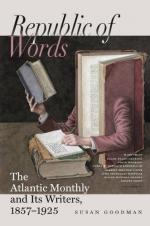There are three kinds of consistory,—the private, the public, and the semi-public. The most interesting are those in which ambassadors are received, for the ambassador’s speech gives some variety to the routine. But in substance they are all equally splendid, equally formal, and—now that the world no longer looks to the Vatican for its creeds—all equally insignificant and dull.
Thus it is not as a deliberative body that the cardinals take part in the government. Their collective functions are for the most part purely formal, and the great wheel turns steadily on its axle without any direct help from them. But as sole electors of the sovereign, whom they are not only to choose, but to choose from among themselves, and as the body from which the highest functionaries of the State are drawn, their individual influence is always very considerable, often whatever they have the tact and skill to make it.
Another body which shares with the “Sacred College” the privilege of furnishing the instruments of government is the Prelacy,—a term which must be taken in its restricted sense, of men, whether laymen or ecclesiastics, destined by profession to various offices of dignity and trust in the civil and ecclesiastical administration, some of which lead directly to the cardinalate, and all of them to personal privileges and a competent income. Their education is often less exclusive than that of the priests, for many of them have belonged to the world before they gave themselves up to the Church, and profane studies have employed some of the time which might otherwise have been devoted to Bellarmino and his brethren. In dress they are distinguished by the color of their stockings and hat-band. When they walk out, a liveried servant follows them a few paces in the rear; and while the cardinals, from “Illustrious” have become “Eminent,” these aspirants to the purple are always addressed as “Monsignore,” or “My Lord.”
The first set of wheels in this complicated machine is composed of the twenty-three Congregations, a kind of executive and deliberative committees, consisting of cardinals and prelates, and first used by Sixtus V., as a speedier and more effective method of eliciting the opinions of his counsellors and bringing their administrative talents into play than the deliberations in full consistory which had obtained till his time. Sixteen of them are ecclesiastical, the remaining seven civil, although the number may at any time be restricted or enlarged according to the wants and the views of the reigning Pontiff. They have their stated meetings, their regular offices and officers; and while theoretically under the immediate direction of the sovereign, they actually relieve him from many of the details and not a few of the direct responsibilities of sovereignty.




